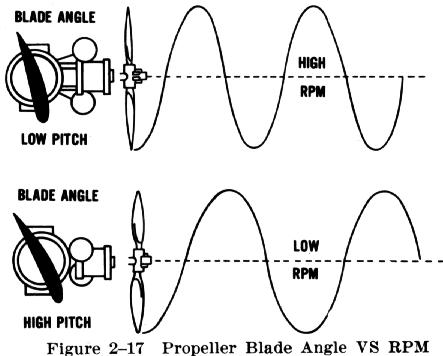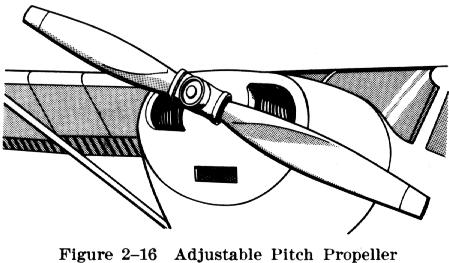 |
An automatic system consists of a governor unit which controls
the pitch angle of the blades so that the engine speed remains constant.
The propeller governor can be regulated by the pilot with controls in the
cockpit, so that any desired blade angle setting (within its limits) and
engine operating RPM can be obtained, thereby increasing the airplane's
operational efficiency in various flight conditions. A low pitch, high
RPM setting, for example, can be utilized to obtain maximum power for takeoff;
then after the airplane is airborne, a higher pitch and lower RPM setting
can be used to provide adequate thrust for maintaining the proper airspeed.
This may be compared to the use of low gear in an automobile to accelerate
until high speed is attained, then shifting into high gear for the cruising
speed (Fig. 2-17).
|


